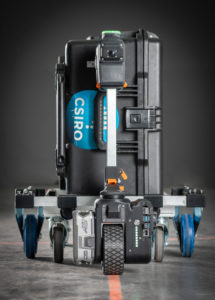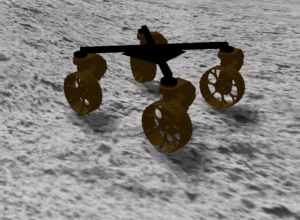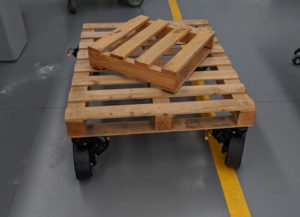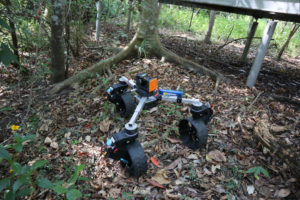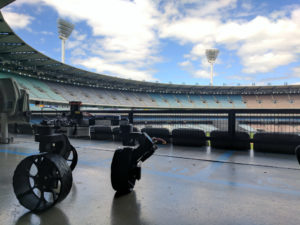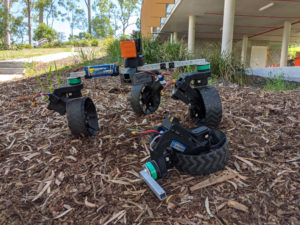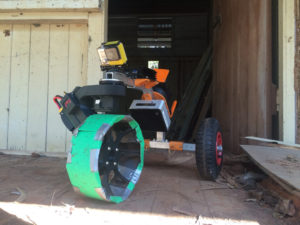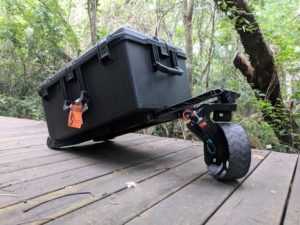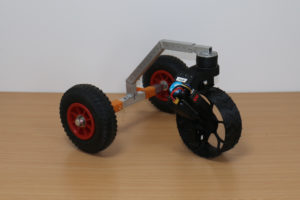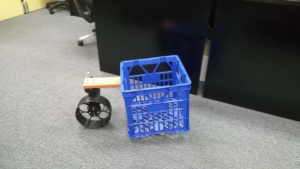NeRobot: Modular Robotics for rapid field deployment
Since 2017, PhD student Troy Cordie has been working on NeWheel under the supervision of Dr Tirthankar Bandyopadhyay from our group, alongside Professor Jonathan Roberts, from QUT.
The goal of NeWheel is to rethink the way we build robots, whereby the design process of existing robotic platforms is abstracted away from the end-user. The user has little input in the size shape and functionality of the robot without the high cost of a bespoke platform.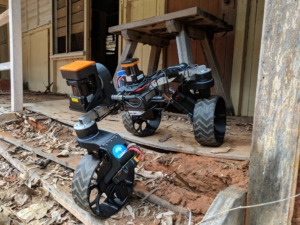
Some outcomes of this work so far include:
- Demonstrated ability to build robots from everyday objects and rapidly assemble bespoke platforms in the field, as detailed in papers 1 and 3 listed below. This work included mapping of a decaying building located on Peel Island Teerk Roo Ra* off the coast of Brisbane. With the use of two different configurations to access different parts of the building, as per paper 1.
- Work with different shaped objects highlighted the capabilities of the NeWheel system to change its capabilities by modifying the number of wheels and their configuration. Proposed in paper 3, this work shows the ability of modular robotic systems to overcome actuator failure.
NeWheel demonstrates the ability for modular robots to be customised by a user for a desired task in the filed. Benefits of this customisation are the ability to create robots from everyday objects or dedicated scientific platforms from the same base components, making robotics applications simpler, more affordable and quickly deployable.
This approach reduces the impact on the environment when deployed in the filed and allows adaptation of existing workflows in warehousing and manufacturing settings.
A commercial applications of this work will be available soon.
*Work conducted on at Peel Island Teerk Roo Ra site is a collaboration with University of Queensland School of Architecture. This body of work would not have been possible without the support of Queensland Parks and Wildlife Service staff who assisted with water and land transport, accommodation and permission to access the Peel Island site where fieldwork was conducted. Quandamooka Yoolooburrabee Aboriginal Corporation (QYAC) provided assistance with rangers to accompany the field trips and gave permission to access the Peel Island Teerk Roo Ra site, which is part of their traditional lands and waters, we thank them for their support and collaboration.
Published papers
- Modular field robot deployment for inspection of dilapidated buildings
- Enabling Rapid Field Deployments Using Modular Mobility Units
- Modular Field Robots for Extraterrestrial Exploration
NeWheel in multiple configurations
Related content
https://research.csiro.au/robotics-staging/newheel-self-contained-two-degree-of-freedom-robot-wheels/
This research continues within CSIRO’s Data61 Robotics and Autonomous Systems Group and we are open to partnerships and collaborations for research, development, and commercialisation.
For more information contact Troy Cordie or Tirthankar Bandyopadhyay.
[jetpack_subscription_form title=”Subscribe to our News via Email” subscribe_text=”Enter your email address to subscribe and receive notifications of new posts by email.”]

